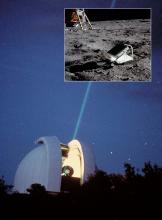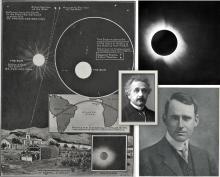Listen to today's episode of StarDate on the web the same day it airs in high-quality streaming audio without any extra ads or announcements. Choose a $8 one-month pass, or listen every day for a year for just $30.
You are here
Einstein Tower
A solar eclipse in 1919 made Albert Einstein world famous. So his home country decided to build a scientific instrument worthy of the scientist. Germany created a Sun-watching telescope that was the largest in the world. And it placed the telescope inside a fairy-land structure that’s a masterpiece of architecture.
Einstein’s theory of gravity had predicted that a massive object would bend a passing beam of light. That was confirmed during the eclipse. Astronomers measured stars that appeared near the Sun, and found that they were slightly out of position — their light deflected by the Sun’s gravity.
The new telescope was designed to test other predictions of Einstein’s theory.
The design job was given to Erich Mendelsohn. The young architect produced a tower six stories tall, in a style known as Expressionism. Its contours include curved, inset windows, a flared base, and other delicate touches — topped by a silver dome.
Work on the Einstein Tower began in 1919, and observations began in 1924. A few years later, though, Einstein was out of favor with the new Nazi regime. He left Germany, and his name was stripped from the tower.
The tower was damaged during World War II, but it survived. Einstein’s name was restored. And the telescope went back to work. It didn’t confirm Einstein’s predictions — the measurements were just too tricky. But the telescope still watches the Sun today — work made possible by an eclipse a century ago.
Script by Damond Benningfield





